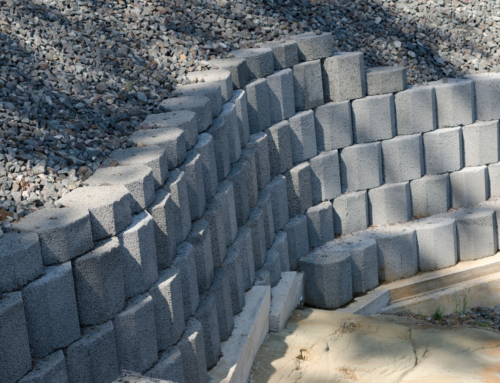Concrete is a very important material used in most civil engineering projects. It was “invented” by the Romans and has been used for many centuries as it is incredibly versatile and made from very simple ingredients (cement, stone, sand and water). Modern concrete also has additives to give it enhanced properties.
Concrete mixing (also called batching), placing, and curing require skilled personnel to create high quality mixtures. Any one of a dozen tasks, if done poorly, will result in poor concrete. Here are the five most common concreting mistakes that we come across frequently:
- Inadequate Curing
Concrete gains strength over its whole life, but most strength gain occurs in the first few days after being laid. This can only happen if concrete never dries out. When it dries, shrinkage cracks occur – and this can never be reversed. Significant loss of strength is the result.
To prevent this, concrete must be continuously cured from the very first hour. Curing means ensuring water/moisture is available to the cement to continue its chemical process. Curing techniques include keeping the concrete covered in water, covering concrete in plastic sheeting, or applying a curing compound.
A very common mistake is that contractors cast concrete and keep it wet until they close site for the day, but they leave the concrete uncovered overnight. They mistakenly believe they can carry on the curing process when they arrive at site the following day. Unfortunately, the concrete uses up any available water very quickly, and wind helps to evaporate the water.
- Poor Compacting/Vibrating
The purpose of compacting or vibrating concrete is to remove trapped air, getting rid of all sorts of voids. Concrete is compacted by vibration to improve the concrete density, strength, and bonding with reinforcement steel. Vibrating also minimizes surface blemishes, and enormously improves the durability of reinforced concrete structures.
Under-compacting can leave a concrete member without the structural integrity the designer hoped it would have when cured. Highly entangled air vessels are a symptom of improper compacting, as well as sand streaks (also caused by insufficient fine aggregate).
Excessive bleeding can also occur due to over-vibrating of concrete, and when heavy aggregates sink and light aggregates rise, separation can occur. Placement lines, or dark lines between adjacent layers of concrete, are caused when the vibration did not penetrate through the underlying concrete layers.
- Adding water to fresh concrete
The water-to-cement (w:c) ratio has more influence on strength than the mixture’s cement content. When adding water to freshly mixed concrete, this will result in a lower quality, weaker finished project. The strength of concrete depends on aggregate quality, air content, overall mix design and – very importantly – cement and water content.
Adding even a single litre of water to fresh concrete will have negative impacts, including increased slump, reduction in compressive strength, increased shrinkage potential, increased seepage potential, decreased thaw resistance and decreased resistance to de-icing salts.
- Inadequate cover to reinforcement
Concrete “cover” is the distance between the inserted reinforcement and the outer surface of the concrete. Concrete cover is critically important for quality concrete. When there isn’t enough cover, the entire structure is compromised – and there are also knock-on effects. There are three core reasons to ensure that your concrete cover has a minimum thickness. These are:
- To protect steel reinforcement from environmental impacts,
- To provide thermal insulation, and
- To give reinforcing bars enough embedment so they can be stressed without slipping.
- Incorrect joints in floor slabs
Concrete floor slabs crack and curl at the corners when stresses build up due to the shrinkage in concrete when if cures and dries. Engineers understand where the stress concentrations are the greatest, which is where cracks are most likely. They design the type and spacing of joints to control where cracking occurs, so it isn’t haphazard and unsightly.
Contractors often disregard the engineer’s joint design and cast large expanses of solid concrete. These always crack later. Sometimes these cracks are hidden under carpets or vinyl flooring. But sometimes the cracks result in cracked tiles and screeds.
Consulting structural engineers in KZN
We’re RJB Projects, consulting civil engineers with high ethical standards valuing trust and respect. This pushes us to consistently produce high quality, error-free designs for our clients. We provide a friendly, seamless, flexible service ensuring there is constant and effective communication throughout each project.
We constantly look to build on our excellent reputation and bring the mindset of mutually beneficial co-operation to all our business relationships. Contact RJB Projects to discuss your upcoming concreting project requirements.



